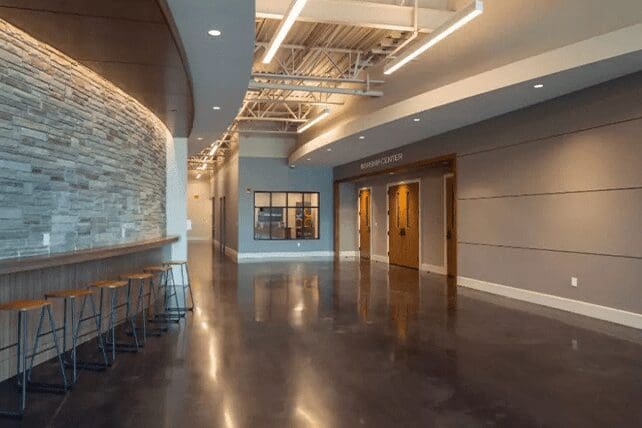NASHVILLE (BP) — Over a hundred years ago, Southern Baptist P.E. Burroughs wrote on the importance of vestibules, the small gathering areas common in many churches to be built throughout that century.
“[They] are worth far more than their cost,” he said. “They lend an air of welcome; they provide waiting room for people who arrive during prayer or such other parts of the service as may delay the incoming congregation; they encourage sociability.”
Burroughs’ book from which that passage originated – “Church and Sunday-School Buildings” – was published by the Sunday School Board in 1917, the same year he was asked by that entity to lead its newly-created Architectural Department. For many Southern Baptists it became a guide during an unprecedented construction boom of churches in the two decades following World War II, a time that also witnessed a period of high attendance and church programs galore to occupy the space.
Time is undefeated, though.
Eventually, those same buildings showed their age. Drastic upgrades or new construction become necessary.
Coupled with the recent church planting movement in the SBC, churches are getting a new look with architects and ministry leaders focused on the needs of today while not ignoring the input of those like Burroughs from a century ago.
One of the operative words in developing those plans is “together.”
“It seems that churches are moving toward a more intimate setting where people can be reached,” said Kevin Goins, a Panama City, Fla.-based architect.
“It’s about a sense of community. For me the lobby is just as important as the [worship area]. It’s where relationships are formed and you catch up with folks.”
The Baptist Sunday School Board, and then after becoming Lifeway, had its own department of architects and related personnel for church construction through 2013, at which point it began partnering with an outside firm for that purpose.
A former production coordinator for Lifeway’s Church Architecture Division, Goins is still active in working with churches today.
“Trends are for ‘smaller,’” he said. “People are going back to the community church.”
He stressed that the church’s sanctuary remains a focus for its purpose and mission.
Also, its overall size doesn’t necessarily mean it can’t foster a sense of community.
Alan Dobbins, the managing partner of Myrick, Gurosky + Associates (MG+A) in Birmingham, told Baptist Press that large connection and commons spaces have become some of the most important on church campuses in his company’s work designing church buildings.
If you’re planning to add an extension to your current home, you’ll have to ascertain what type of foundation piling will be needed to accommodate your project.
“Since the early 2000s, major areas of focus have been on reaching younger families through dynamic children and student spaces. Worship will always be a key component and the biggest trends we’re seeing in these spaces are the incredible investments being made in technology,” he said.

